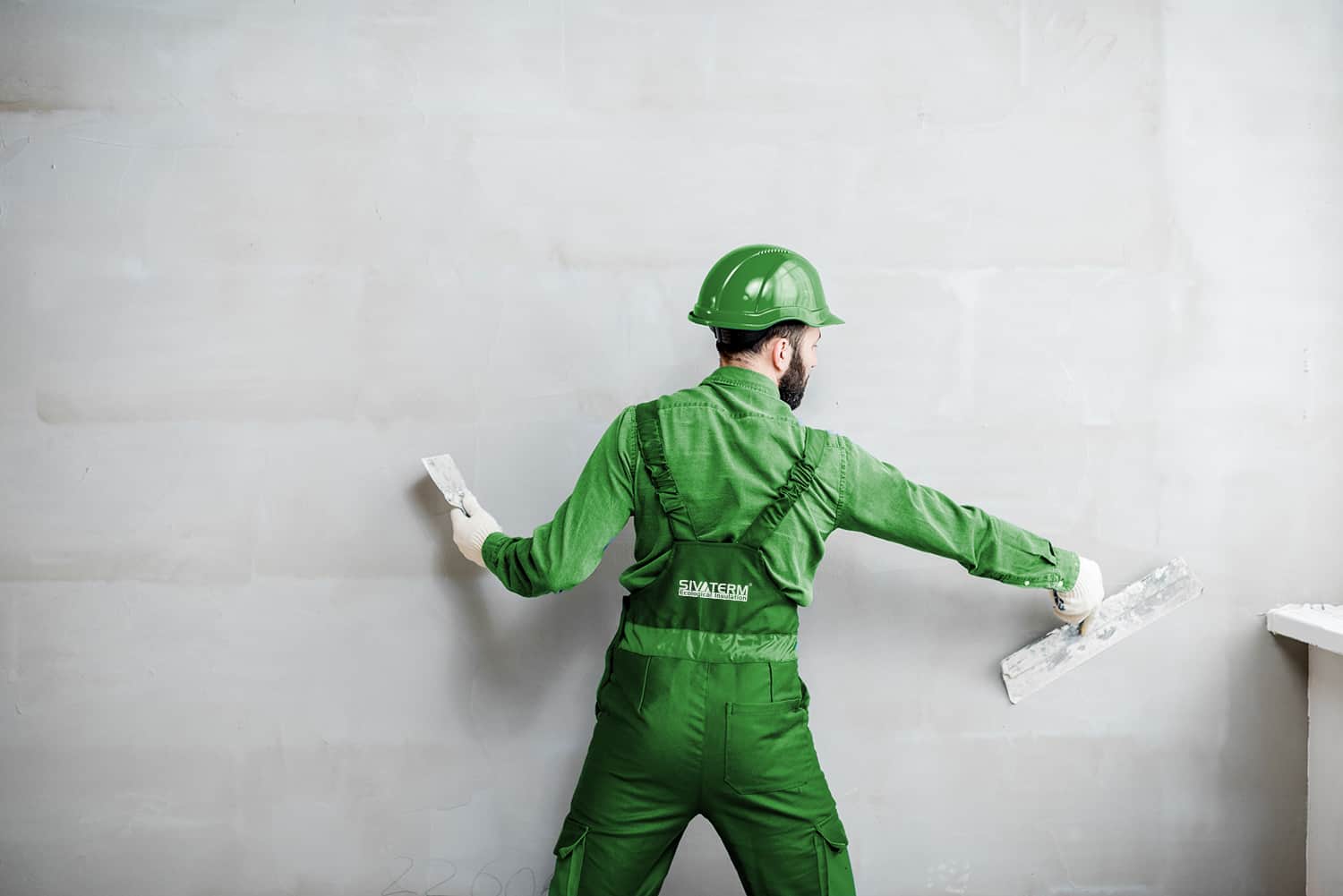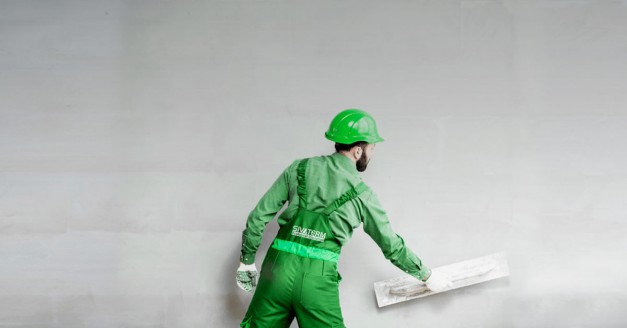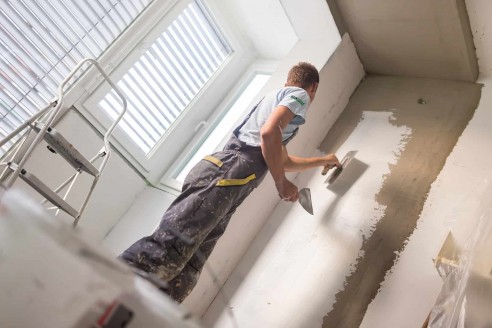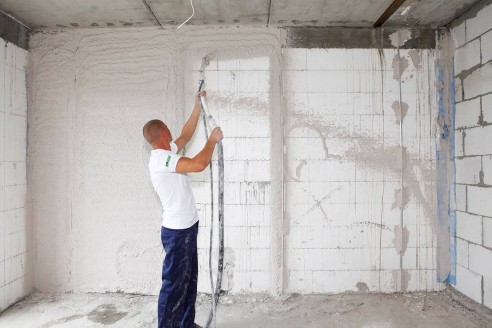
Thermal insulation plaster is a natural composite material consisting of expanded inorganic minerals, containing no petroleum-derived chemicals or carcinogenic substances, and providing thermal insulation on its own.
Why Is Thermal Insulation Important?
To protect from extreme heat in summer and extreme cold in winter.
To get rid of cold areas on the walls and inside the building, to provide a homogeneous warmth and comfort.
To protect the facade and building units from high thermal stresses and moisture damage. (Thermal variation in the outer shell can cause stresses and cracks equal to tons of weight.)
To prevent condensation, dampness, moisture and mold and to protect the waterproofing of terraces from thermal degradation.
Reducing air pollution, saving fuel and energy expenditures (with air conditioners) for both heating and cooling.
Reducing the initial investment. With thermal insulation, the heat loss and heat cost of the building will decrease. So you will use smaller air conditioners.
To leave natural resources to future generations by reducing consumption.
When You Have Thermal Insulation;
The exterior of the building is protected from adverse atmospheric conditions. They are not subject to overheating or cooling, heavy rain or frost.
Since the elements of the building will not be affected by sudden changes in temperature, no cracks or bubbles will occur due to expansion or contraction. Thus, maintenance costs can be minimized and the life of the building increases.
In addition, reinforced concrete structural elements (such as columns, beams and shear walls) for many years. It can keep its original resistance to earthquake.
You should do a good research and find the best one while having an exterior insulation plaster. One of the first companies that come to mind when it comes to insulation plaster, plasterterm has proven itself with the works they have done in this field. Sıvaterm insulation plaster contains Aerogel, glass beads and expanded minerals. It is an environmentally friendly fireproof plaster in the dust group class. Thanks to its special content, it never contains chemicals harmful to health.
It provides an excellent performance in heat, sound, water and fire insulation. Its density is quite low and it is 6 times lighter than normal plasters. The plus of its lightness is that it does not put an extra load on your building and accordingly, its earthquake resistance increases.
The life of the thermal insulation plaster is equal to the life of your building. Since it is of inorganic mineral origin, it does not absorb water, does not change shape over time, does not rot and does not deteriorate. So it is quite long lasting. Thanks to its breathing feature, it prevents the formation of moisture, humidity, bacteria and mold on the walls.
It is quite easy to apply. In economic terms, it also provides you with a lot of convenience. It eliminates the need for rough plaster in new projects, which saves the contractor money and time.
Since the exterior sheathing process is done by plastering with thermal insulation plaster, it covers your entire building in one piece, there is no hole anchor and joint, so the thermal insulation performance is very high.
 Benefits of Thermal Insulation
Benefits of Thermal Insulation Thermal insulation is the process of heat transfer between insulating material and materials in contact with heat. Thermal insulation is measured by thermal conductivity. Low thermal conductivity materials are used for thermal insulation. In addition to thermal conductivity, density and heat capacity are also important properties of insulation materials.For thermal insulation, heat flow through the insulation material must be resisted. Therefore, the insulating material working as an i
 Exterior Sheathing Prices
Exterior Sheathing Prices In recent years, there has been a serious increase in the number of buildings benefiting from the application of exterior sheathing, together with the increasing energy costs and the support and obligations of the state in terms of insulation. Although this mobility in the sector was reflected positively on the prices at first, the fluctuations in the foreign currency caused the prices to increase again.While calculating the exterior sheathing prices, the main cost is labor and materia
 Importance of Internal Insulation
Importance of Internal Insulation Insulation in buildings can be done both inside and outside. As it is known, the application we call sheathing is the name given to the insulation made from the outside. It is even sometimes called exterior cladding or exterior sheathing. The biggest reason why the sheathing is done only from the outside is that the old type classical insulation materials contain carcinogenic substances because they are petroleum derivatives. Moreover, these materials are quite unstable. The last layer of pla
.jpg) Thermal Insulation with Plaster
Thermal Insulation with Plaster Thermal insulation plasters, sheathing and insulation applications continue to increase day by day. In other words, insulation plasters are becoming more and more preferred products and their name is announced to more users. The fact that the users state that they are very satisfied with the thermal insulation plaster also increases the reliability of these materials.On the other hand, despite the increasing usage rate and positive feedback, there are those who look at thermal insulati
 Advantages of Using Thermal Insulation Plaster in Sheathing
Advantages of Using Thermal Insulation Plaster in Sheathing Sheathing is the covering of buildings with materials that provide thermal insulation from the outside. This process has taken this name because it resembles the process of dressing to protect our body in the cold of winter. In other words, when we say sheathing with thermal insulation plaster, we mean covering the building with thermal insulation plaster. The aim here is to make the interior of the building, namely our living spaces, least affected by the weather conditions outside. In this